Jeremy Waldron, professor of social and political theory at Oxford University, argues the case for legislation against hate speech

Principle 5 is something we can all applaud. But as Timothy Garton Ash’s commentary indicates, it raises further issues that are not conveyed in the formulation of the principle itself. Should “speaking openly” mean speaking without any legal constraint, even when the speech is manifestly uncivil? So the discussion raises the issue of hate speech and the difficult question about whether it is ever appropriate to legislate against it.
The most striking thing about Timothy’s commentary on this issue is the absence of any substantial consideration of the harm that hate speech may do to those who are its targets. The message conveyed by a hateful pamphlet or poster, attacking someone on grounds of race, religion, sexuality, or ethnicity, is something like this:
“Don’t be fooled into thinking you are welcome here. The society around you may seem hospitable and non-discriminatory, but the truth is that you are not wanted, and you and your families will be shunned, excluded, beaten, and driven out, whenever we can get away with it. We may have to keep a low profile right now. But don’t get too comfortable. Remember what has happened to you and your kind in the past. Be afraid.”
That message is conveyed viciously and publicly. To the extent that they can, the purveyors of this hate will try to make it a visible and permanent feature of our social fabric. And members of the vulnerable groups targeted are expected to live their lives, conduct their business, raise their children, and allay their nightmares in a social atmosphere poisoned by this sort of speech.
Not only that, but the aim of this sort of speech is to defame the members of the vulnerable groups in question – to do whatever they can do to lower their reputation in the eyes of others and to make it as difficult as possible for them to engage in ordinary social interactions.
As I understand it, Timothy’s position is that the civil authorities should have no interest in this at all, no concern about the impact of on the lives of those who are targeted by hate speech. His discussion shows this by not dwelling on the effect or impact of hate speech and by implying that anyone who does dwell on the harm that may be done by hate speech is, for that reason alone, an enemy of freedom of expression.
A case can perhaps be made that legislation on these matters is chilling and counter-productive. We certainly need to discuss that. (Actually, I don’t accept the speculative “slippery slope” reasoning conveyed in Timothy’s commentary of Principle 4, but I do accept that there are serious questions to be addressed.) However, no discussion of the free speech/hate speech issue can possibly be taken seriously if it does not consider the harm that those who advocate the regulation of hate speech are trying to address.
So, what I would most like to see added to our discussion of Principle 4 is some consideration of this harm – I mean consideration at length, not just shrugged off in a line or two – and some explicit attempt to defend the position, which I think is implicit in the existing discussion, that the harm of hate speech pales into insignificance compared to the chilling effect of any legislation on the speakers themselves.
Once we understand the harm that hate speech may inflict, we are in a better position to grasp the argument in favour of the legislation that restricts it. Such legislation, in the countries where it exists, aims to uphold important elements of basic social order – and in particular the civic status or basic dignity of all who live in the society. Particularly in communities with histories of injustice or in modern conditions of religious or ethnic diversity, one cannot assume that the basic dignitary order will be upheld. There will always be attempts to stigmatise, marginalise, intimidate, or exclude members of distinct and vulnerable groups, and what we call hate speech is often a way of doing this or initiating this. As I have argued in Dignity and Defamation: The Visibility of Hate (the 2009 Holmes Lectures at Harvard University), hate speech legislation seeks to uphold a public good by protecting the basic dignitary order of society against this kind of attack.
Legislative attention to hate speech is like environmental legislation; it seeks to preserve a very elementary aspect of the social environment against both sudden and slow-acting poisons of a particularly virulent kind. Of course, we hope that attempts to underline the social order will be met with strong responses that are, equally, exercises of free speech. But legislation may be necessary, because there is no guarantee (and it is little short of superstitious to think that there is a guarantee) that more speech is an effective answer to hate speech.
Such legislation needs to be drafted with care. It needs to distinguish, for example, between attacks on people’s basic dignity and reputation, and attacks on their beliefs (the former are appropriate topics for legislative concern, but not the latter. It also needs to define alternative ways – non-virulent ways – of expressing the substance of the concerns that people may have about the behaviour of other groups or members in society, ways that will not attract legal sanctions. The best hate speech legislation takes care to do this. Its aim is to confine the application of legal sanctions to speech-acts, which directly and deliberately seek to make it impossible for their targets to live lives of basic dignity in our society.
This article was republished on Eurozine.



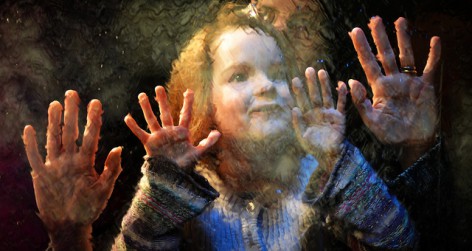
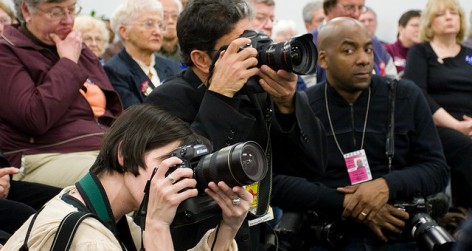
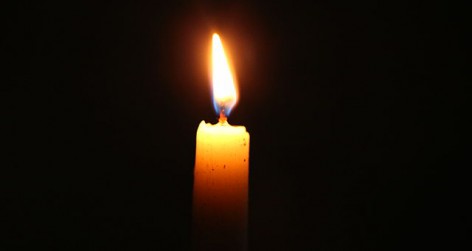

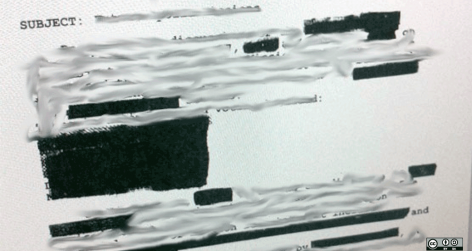
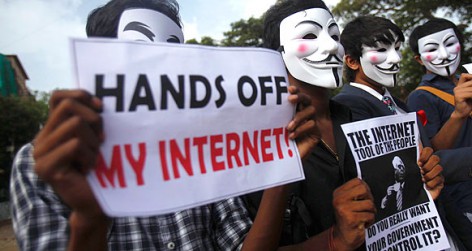
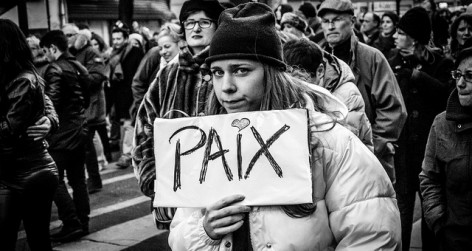
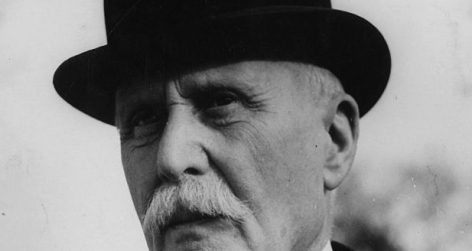
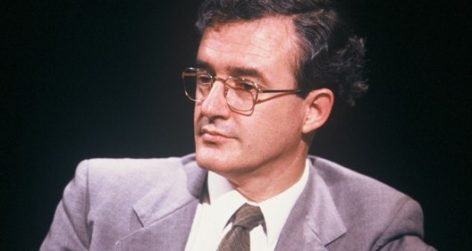
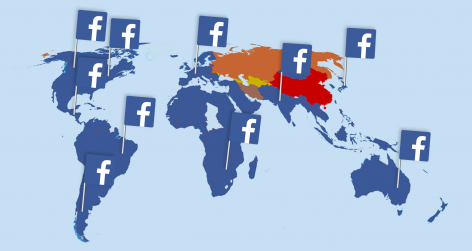
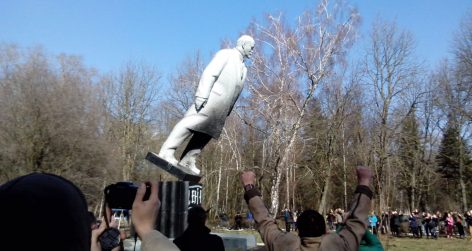
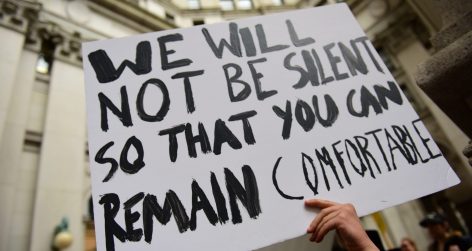

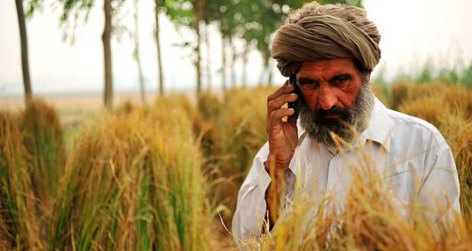
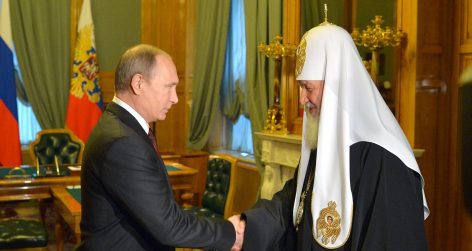


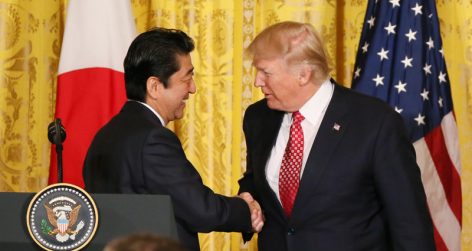
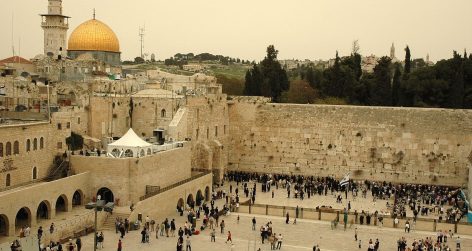

reply report Report comment
De-humanising certain sections of society has always been the most useful wepon for racist behaviour. Whether that be through the written word, cartoons or rallies.
It is a nice notion that that we are getting the truth of it now, that we all know where we stand. From my own exprience the statement: “Don’t be fooled into thinking you are welcome here. The society around you may seem hospitable and non-discriminatory, but the truth is that you are not wanted, and you and your families will be shunned, excluded, beaten, and driven out, whenever we can get away with it. We may have to keep a low profile right now. But don’t get too comfortable. Remember what has happened to you and your kind in the past. Be afraid.”
Has some truth to it. Certain parts of all societies have adapted to play at tolorence, they have had to. For the sake of employment and education, which are fundemental to living in most modern worlds.
I would have no right to tell somone from another race what they should or should not find offensive to them. Yes it does open the field to those who would abuse this by playing the race card but, if we must accept that there are people who are racsit and we find that morally contemptable. So to we must accept that their will be morally contemptable people on the filp side, who would use this to garnish sympathy. It is too simple to say:
” If we start legislating against something so ambiguous, people would be tempted to abuse their right to report events related to “hate speech”.
What if we don’t? should people be subject to abuses because they are too scared of be accused of playing the race card, and put up and shut up. this does nothing to solve hate in societies. Or is the point of free speech to be able to express your opinion, and have that challenged. no matter your view.
reply report Report comment
From my point of view, hate speech is like every other speech. Who decides what “hate speech” is? It is ambiguous. If we start legislating against something so ambiguous, people would be tempted to abuse their right to report events related to “hate speech”. Moreover, people will not stop hating each other (or discriminating) because of legislations; they will just find different ways to do so. If we let it remain the way it is, at least we will be aware of the truth, being this better than hiding it, and being this the whole point of freedom of speech and knowledge dissemination.
reply report Report comment
In 1994 the world has witnessed one of the bloodiest genocides in history; nevertheless the international community has been a passive spectator, failing in preventing the atrocities. In hundred days a million people have died and 500 000 women have been raped in Rwanda, leaving the country torn. The Rwanda genocide happened in contemporaneously the Yugoslavian one but with a big difference: the victims were black. Think at a loved person each time you read a world…Now those 2500 words are just the 0,25% of the whole people killed during the genocide. Can you imagine how many have died? The aim of the essay is to analyse the role of Hate media before and during the genocide in order to determine the dynamics and causes of such violence and how they have been used as a weapon to eradicate the Tutsi minority. The first section gives an overview of the genocide, including the most important events. Afterward, the second section focuses on the radio, more specifically Radio Rwanda and RTLM , the newspaper Kangura and gives a detailed analysis of the role of each actor in trigging off violence. In conclusion all the most remarkable observations are collected in order to prove that Media are guilty of having incited violence and have been the protagonists in the propaganda process.
Background
Numerous reasons have been indicated as the matrices of the conflict, but the main reason can be traced back to the elites’ choice in exacerbating the ethnic rift between the Hutu and Tutsi, dehumanizing the Tutsi ethnicity and legitimizing the use of violence to eradicate them from the country . The ethnic division was a product of the Belgian/German colonial domination, which determined the distinction in favour of the Tutsi minority. The distinction has survived the decolonization process, remaining present on national Id. card. The Tutsi continued to believe in their superiority and the Hutu perceived them as a foreign invading presence. Nevertheless intermarriage was common and the distinction become blurry. In 1959 anti-Tutsi violence lead to 20,000 Tutsi victims and 300,000 flee to neighbour countries. Following in 1990 the young generation of the Tutsi migrated to Uganda constituted the Rwanda Patriotic Front (RPF), consequently their invasion in the Rwanda territory exacerbated hatred and it is perceived as one of the generative forces of the genocide. The consequent three years and a half of anti-Tutsi aggressions would have lead to the shoot down of the President Habyarimana on the 6th of April 1994, which stirred up the genocide. Nevertheless there are no certainties on who shoot down the plane, for this reason it has to be taken with considerations. Evidences have although demonstrated that the conception of genocide maturated gradually between 1991-1992, degenerating between 1993-1994. Violence against Tutsi can be noticed from 1991 but the perpetrators, unlike after 1994, were mobs and militiaman.
The genocide happened parallel with the civil war and lasted for little more than 100 days, seeing the brutalisation of a million people ; civilians were raped, tortured and mutilated with sadistic rage. The targets identified were mainly: anti-Habyarimana and opposition members, Hutu opposing the extremists, journalists and human rights activists, Tutsi with relevant societal power, but also Hutu priests, nuns and civilians who hidden Tutsis. Moreover, many Hutu, who were in charge of Catholic and Anglican institutions, supported the violence and killings and church leaders were closely related to the genocide chiefs. This merge can explain how many ordinary people have embraced the cause and become the genocide protagonists.
Hate media: radio & newspaper
The radio has been used as one of the most powerful tools during the genocide due to the huge influence that it had on the Rwandans: the majority of the population was illiterate but had access to radio broadcasts; in fact, data have reported that each 13 citizens there was a radio . The media, which had been the protagonist during the genocide, were RTLM, an independent station and Radio Rwanda, a governmental station. RTLM become the most prominent media, using a perverted method to gain support from the population: at the beginning created an environment of trust and relaxed conversation, embodying the people’s voices and playing lively Congolese music. Implicitly it established a circle of trust between RTLM and the Hutu population, which has been used to justify and perpetuate the atrocities. Nevertheless, they decided to lead the propaganda and start the massacre just after the shooting down of Habyarimana’s plane.
RTLM was backed by multiplier actors, which comprehended from the ruling elites to the general population. It has been reported that the broadcastings were “informal and lively” and sounded like: “a conversation among Rwandans who knew each other well and were relaxing over some bananas beer or a bottle of Primus in a bar” . Additionally the voice of “ordinary people” was used in order to make it more reliable (the most popular music and gossips were transmitted). After having created a sense of trust in the radio, for the authorities it had been easy to use it as a tool to encourage the killings and foment hatred towards the Tutsi. They played on the human unconscious and made the Hutu majority fearing an attach by the Tutsi . For this reason it was rational for the Hutu to defend them-selves against the imminent threat: it was a discourse of kill or being killed. Despite at the beginning many testimonies reported that they could not believe to the radio words, the constant and systematic broadcast of hate speeches and orders made them believe that the only rational choice was to destroy the Tutsi if they wanted to live. Furthermore, it was continuously repeated that no pity would have been exercised towards the Hutus, who would have not followed the directives, generating a univocal alternative. Additionally, continuous incitements and directives were broadcasted in order to perpetuate the killings.
Incitements were carefully planned and they used persuasion to mobilize the population: they created a sense of defined identity, thanks to the processes of linking and differentiation . The Tutsi were dehumanized and portrayed as “cockroaches” while the Hutus had to “rise as a single man” and fight the so-called “final war” . Every word transmitted a sense of inferiority and underlined the cruelty of the Tutsi, justifying the actions . Continuously they reminded to remain vigilant, creating a sense of insecurity (RTLM bombarded the audience repeating that the Tutsi were coming to “exterminate, exterminate, exterminate, exterminate”) . The slaughters were called “work” and they continuously expressed that who was not willing to “work” had to be weed out by the good “workers who want to work for the country” . Besides, both radios had been used to send the orders: often they named specific targets and who fulfilled the directives was preened on the broadcasts. RTLM was also adopted to set up meetings and direct people to certain areas, inciting to look in houses and hidden locations. Conversely, Radio Rwanda directed bulldozer drivers to dig graves for the bodies in order not to have bodies on the streets, which could have been seen by foreigners.
For the purpose of making the messages more trustworthy authorities regularly intervened on the transmissions. Testimonies reported that RTLM said that the Tutsi had to be killed while other say that the radio taught people that they “must kill them before they kill you” . A “brilliant” tool used to increase support was to interview normal people on the streets and ask them why they were “working” and how they were doing it; this created a sense of normality in the killing making them to sound like the only rational thing to do . Foreigners were shocked about RTLM broadcasts, but being a private enterprise, diplomats could not jam the station. Moreover, the radio continuously argued that it was just exercising its freedom of speech and expression.
It has to be précised that it is wrong to talk about hate media, because the term hate is too limitative, thus it is better to label them genocide media, due to the sophisticated elaboration of the information. The genocide had been carefully planned and it played on the post-colonial heritage to mobilize the public: to obtain mass mobilisation, it was necessary to create a mass movement. “Mirror propaganda” (which is the principle of attribution to the other of what “us” are ready to do) was employed to trigger off the killing and unify the Hutu under a homogenous agent . Additionally, socio-ethnic principles have been adopted to construct a unified representation of “people”, leading to the legitimization of collective actions due to the fact that “the people” are the majority. Extremist propaganda was the product of a “traditional socio-racial policy” which had been dominant for more than a generation. For those reasons propaganda was founded on tangible assumptions and eliminated any type of opposition, unifying the Hutus under the conception of Hutu power. Nevertheless, the movement came to life thanks to the exercise of democratic language, which constituted a “democratic alibi”, founded on the right of freedom of speech, justifying hate speeches .
The propaganda made leverage on the established racist resentments towards the Tutsi, dehumanizing them, picturing them as animals, irrational and cannibals, and gave legitimacy to the actions due to the numerical majority of the Hutu. Moreover the legitimisation came from the acceptance of the Tutsi numerical inferiority and that they were not worth living; a testimony expresses: “the proof that we will exterminate them is that they represent only one ethnic group. Look at one person, at his height and physical features, look close at his cute little nose and than break it” . Moreover, divine justifications were adopted, picturing the Holy Family as supporters of the Hutu people. All those practices had been used to awaken the Hutu identity and mobilize them towards actions. Whereupon, it can be concluded that the propaganda has greatly managed to depict the actions as a “democratic mobilisation”, therefore, succeeding in legitimizing and justifying the actions of an entire group.
Newspapers have also been used to spread the feelings of hatred and incite the Hutus to eradicate the Tutsi presence; nevertheless, due to the high illiteracy rate, their role has been less prominent that the one of the radio, which could reach a more vast pool of people. The most popular newspaper was the bimonthly Kangura, which promoted hate media, claimed a new democratic order, free from the Tutsi plague, theorizing the birth of a new “pure” community. It issued the “ten commandments of Bahutu” (1990) identifying the Tutsi has the most dangerous enemy of the Hutus, for this reason they incited not to engage with them and avoid intermarriages and business relations. The Tutsi were pictured as a scapegoat and were blamed for the instable situation in Rwanda characterized by: increasing poverty, difficulty of obtaining education, absence of a centralized healthcare system, an economical system founded on agriculture, where the productivity of the land was decreasing. The Tutsi were seen as the only ones able to achieve privileges and living at the expenses of the Hutus. Moreover the Tutsi were blamed for detaining a privileged position founded on an unequal system, where the minority was exploiting the majority. Often allegories were used to denounce the unjust situation, giving as ultimate solution to embrace the arms and eradicate them once for all . Kangura reinforced the propaganda thanks to the creation of a state of imminent threat.
Media reflected the hatred persistent within the Rwandans and favoured the dehumanisation of the Tutsi . The dehumanisation was given by the allegories attributed to the Tutsis: often they were pictured as cockroaches, hyenas, monkeys and gorillas. The media have benefited from the instable internal situation and have used it in their advantage: Rwanda was characterized by: “social discontent, war, high population growth rate, economic crisis, regionalism historical ethnic conflict, bad leadership and rivalries with foreign powers” ; therefore the mixture of those components has triggered the genocide.
Considerations
The genocide has involved the whole nation and the rhythm of the killings was marked by the RTLM broadcasts, which bombarded continuously the audience with such messages: “The graves are just half empty; who will help us to fill them?” . RTLM played on three aspects to incite and perpetrate the genocide: ideology, performance and daily routine. Firstly it played on existing dominant discourses; secondly the radio animateurs created a link with the audience; lastly they made the genocide part of the Rwandans daily routine. The killings were perpetuated everywhere in the country, becoming part of a routine, involving social intimacy and emotionally detaching perpetrators from their victims, no matter of their previous relationship (friend, lover, neighbour). Analysing the events under a media study perspective, the specific instructions made humans like “automatons”. The two tools involved in the killings where the radio and the machete: the radio gave orders, while the machete executed the orders. Thanks to the strong trust in the radio, media producers could obtain a blind obedience from the civilians and manipulate the audience at their linking, due to their lack in critical consideration of the news .
The radio used existing myths and stereotypes to create a sense of Hutu unity, which even justified the killings of relatives and friends. To achieve such power, three main discourses have been used: history, democracy and development. RTLM insisted to remain constantly vigilant and recalled to historical facts, such as the feudal and colonial era. While using the democracy discourse, they focused on ethnicity and nationalism: they reinforced national identity playing on the majority variable, establishing a sense of ethnic solidarity. When using the development discourse they recalled to the relationship between state and economy: in the past obligatory communal works had to be exercised for the good of the community. The radio used this image and gave to “work” a new meaning: killing. The “work” was like a communal work, needed for the community survivor . Words were picked carefully, nothing was left unplanned: the propaganda made leverage on the three fundamental components of the Rwandan cultural heritage, legitimizing the killings for the good of the majority. The radio created a dogmatic doctrine where killing was perceived as a job, a routine, normalizing the act of killing. The radio was a medium of performance, which made the audience directly involved in the actions; this was possible thanks to the informal atmosphere previously established with the latter. Oral texts, such as songs became part of the Rwandans daily life: while killing, walking or drinking a beer, perpetrators were singing anti-Tutsi songs .
It can be concluded that RTLM was the base of the propaganda edifice, creating foundation trusts and making them tangible thanks to the “performative” aspect. Moreover it played on the balanced combination of familiar and authoritative tone, making the amateurs directly involved. It mobilized the public giving daily lessons and bulletins, which regulated the routinized “work”. The normalisation of the events make the population abstracted from the killings and “automatized”. Violence became normal, and exactly this normality co-opted in the service of violence. Coercion, interest and fear have played the dominant roles during the genocide, but the media have made the theory concrete and terribly real . Media, especially the radio are guilty of having incited the genocide and regulated its actions, creating an environment of normality in order to justify the atrocities. The propaganda was carefully planned in order to make leverage on the most irrational human drives, leading to the most pervert genocide in human history.
reply report Report comment
Works Cited
1) Annan, Kofi A., and Allan Thompson. The Media and the Rwanda Genocide. Ottawa: International Development Research Centre, 2007. Print.
2) “Welcome.” Rwanda File. Web. 11 Mar. 2012. .
3) “SurplusKnowledge.” Surplusknowledge.com. Web. 11 Mar. 2012. .
4) The Voice of God: Propaganda and the Rwandan Genocide. Dir. KenazCreative. YouTube. YouTube, 22 May 2011. Web. 11 Mar. 2012. .
5) NothingX9. “Ghosts of Rwanda.” YouTube. YouTube, 17 Dec. 2011. Web. 11 Mar. 2012. .
6) Jolyon Mitchell. “Remembering the Rwandan Genocide: Reconsidering the Role of Local and Global Media.” Global Media Journal 6.11 (2007): 1-19. Print.
7) Kellow, Cl, and Hl Steeves. “The Role of Radio in the Rwandan Genocide.” Journal of Communication 48.3 (1998): 107-28. Print.
8) Adhikari, M. “Review: Allan Thompson (ed.), The Media and the Rwanda Genocide. London: Pluto Press, 2007. 17.00. 480 Pp.” European Journal of Communication 23.1 (2008): 89-92. Print.
9) Scott Straus. “Rwanda and RTLM Radio Media Effects.” Department of Political Science, University of Wisconsin, Madison. Print.
reply report Report comment
U praksi, ljudi koji koriste govor mržnje ne predstavljaju toliki problem jer oni uglavnom nisu dovoljno hrabri egzekutori svojih namera. Ono sto zabrinjava su ljudi koji slušaju i prihvataju njihov govor mržnje i kao produžene ruke tih malicionznih ljudi sprovode ih u delo.
Ako se govor mržnje zabrani, on neće nestati već će samo biti potisnut u underground sferu i samim tim će biti teže vršiti monitoring nad njim. Smatram da bi se kao civilizovano društvo trebali zapitati zašto takvi govornici pronalaze publiku i pozabaviti se prvenstveno njima i razlozima koji stoje iza njihovog pracenja ovakvih necivilizovanih razmisljanja. Ovde nije pitanje samo da li mi možemo zabraniti ljudima da koriste govor mržnje već da li možemo zabraniti ljudima da ga čuju!!
reply report Report comment
It is clear that if we accept as valid the idea that “the denial of the Holocaust is a crime”, as it is in certain European countries, we can’t oppose, on pure logic grounds, the criminalization of speaking about “the Armenian genocide” as happens today in Turkey. Our sentiment might be on one side or another, but then the problem is where to draw the line? Which kind of speech is acceptable, and which is not? Who decides? A way to escape these kinds of dilemmas is by simply defending freedom of expression as an end in itself. Theoretically it works and we undoubtedly need references to contrast reality.
However, the problem starts when we turn to specific contexts, where real people live. I just leave here an example in case you -colleagues and participants in this forum–would like to discuss. Some parts of the Mexican north border has become in the last five years one of the most dangerous zones in the world with almost 11,000 murders per year. Some experts and academics are even talking about a failed State in this region. In this context where drug-traffickers violence is silencing the coverage of the media, where restaurants close before 7:00 pm, and where taxis refuse to circulate on highways after dark, a new cultural phenomenon is becoming more and more popular on both sides of the frontier: the collective of Mexican musicians known as Movimiento Alterado (Altered Movement). With songs titled “the bloodthirsty killers”, “the crazy ones”, and the like, their lyrics, explicitly sung from the direct view point of the drug cartels’ assassins, make an open apology of their beheadings, kidnappings, and torture skills. One song says: “I kill just because I love the sound of my gun when shooting… “.
In Mexico, all musicians identified with this “movement” have been banned from concerts and their songs are not played on radio stations as a consequence of local governments’ regulations. However, on the internet one can easily access their sites and download their songs and pictures (usually taken with heavy weapons).
One might say that on the face of hate speech it is always better for the individual to use earplugs than for a society to impose regulations. And it might be OK if one lives in Toronto, Paris, NY or London where if something crosses the line into one’s rights one can always resort to the State for protection -with the hope that it will more or less respond. But, what to do in other sort of contexts where violence rules and where the efficacy of the rule of law is compromised? Personally, I do not think banning this sort of “hate speech” might be a solution -especially on the face of new technologies–, but then what do in a context in which extreme violent responses against the other (that could be anyone) are part of daily life? Is not the Movimiento Alterado a way of legitimizing the prevalence of violence? The answers are not simple, I guess.
reply report Report comment
Freedom, especially intellectual freedom, is the greatest virtue of any people and they should be extremely wary of allowing any attempt to circumscribe it in any way. We should particularly guard against all attempts to confer on government the power to legislate in the sphere of intellectual freedom. The State has rapacious tendencies, and above all should never be allowed to intervene in private disputes. What sort of people would think of running to the State for help to settle a private dispute? What sort of world are we living in that would even raise the question? We should all accept responsibility for our acts. If another screams–or even utters civilly– against me a hateful word or tirade of abuse, I am responsible for anything I may do in response or reaction to it. I will not be provoked. There are civil and criminal laws in place to deal with all possible situations. Let us not pander to the supposed hurt feelings of anyone, whether majorities or minorities, either as individuals or as groups. Let us give them the credit of assuming they have the stomach to stand up for themselves.
reply report Report comment
The key here is the phrase ‘with civility’. This automatically rules out hate speech.
I think there is a case for outlawing forms of hate speech that are an incitement to violence.
I agree with TGA that the preacher with the placard should not have been arrested!
reply report Report comment
I understand Waldron’s sentiment, but I can’t agree with the legal framework for which he’s advocating. Where does one draw the line? If we start limiting free speech to “civil” language that upholds “dignity,” who will define those terms, and how broadly will they be defined?
To put in another way: as every public intellectual knows, it’s impossible to write or say anything without offending someone. If I proclaim that I believe in x religion, does that mean I can be taken to court for “hate speech” because my neighbor is offended that I’ve suggested his belief in y religion is excluded? I’m not crazy about the the cliche of “slippery slope,” but it’s perfectly valid to question where one would draw this questionable line.
I despise bigots like those of WBC, the KKK, and other hate groups in the same vein. But unless their speech directly incites someone to hateful action (e.g., violence, active discrimination, etc.), the demands of a free society require that I buy earplugs rather than hire a lawyer.
reply report Report comment
“Don’t be fooled into thinking you are welcome here. The society around you may seem hospitable and non-discriminatory, but the truth is that you are not wanted, and you and your families will be shunned, excluded, beaten, and driven out, whenever we can get away with it. We may have to keep a low profile right now. But don’t get too comfortable. Remember what has happened to you and your kind in the past. Be afraid.”
I think it’s interesting that the picture attached to this article is a WBC protester, and that the debate in America about hate speech and its limits is focused in large part on the WBC. One of the things that has heartened me about American society today – and encourages me to oppose any sort of legislative limits like the ones Prof. Waldron proposes – is that almost without exception, WBC is reviled. Even if progressive Democrats and ultra-conservative Republicans can’t agree on anything else, we all can (and do) agree that these protesters are the worst of our society and their ideas and behaviors are worthy of scorn and derision.
I worry about “intelligent checks and balances” and free-speech-abrogating legislation that is “formulated very clearly” much more than what the WBC can come up with.
reply report Report comment
I’d agree with this. As far as I’m concerned, principles of free speech should not protect, say, the Phelbs clan and the Westboro Baptist Church shouting their “God hates fags”, “Your son burns in hell!” drivel in earshot of funerals, and I haven’t yet heard any convincing arguments that legislating against such speech in specific contexts is the thin end of the wedge. Obviously any such legislation would have to be formulated very clearly and be subject to intelligent checks and balances – but any society and any state limits speech, including those that are loudest about free speech. Those limits should be minimal, but it would be disingenuous to say that there should be no limits whatsoever, I believe.